 W
WandLinux is an Ubuntu-based system using the Linux kernel designed to run a Linux environment natively on Windows systems. It is FOSS being released under the GNU GPL license. It uses the coLinux kernel to run, Xming to run X Window, PulseAudio for sound, and has the option of either using a stripped down version of KDE or Xfce.
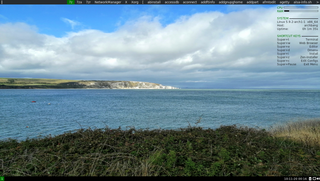 W
WArchBang Linux is a simple lightweight rolling release Linux distribution based on a minimal Arch Linux operating system with the i3 window manager, but was previously using the Openbox windows manager. ArchBang is especially suitable for high performance on old or low-end hardware with limited resources. ArchBang's aim is to provide a simple out-of-the-box Arch-based Linux distribution with a pre-configured i3 desktop suite, adhering to Arch principles.
 W
WAsianux is the project name of the Linux OS based on Red Hat Enterprise Linux. (RHEL) and jointly developed by companies in Japan, China, and South Korea,. This project was dissolved in September 2015. The Asianux trademark is held by companies in each country.
 W
WBerry Linux is a Live CD Linux distribution that has English and Japanese support. Berry Linux is based on and is compatible with Fedora 20 packages. The distribution is primarily focused on use as a Live CD, but it can also be installed to a live USB drive. Berry Linux can be used to try out and showcase Linux, for educational purposes, or as a rescue system, without the need to make changes to a hard disk. The current version is 1.31 released on 8 July 2019.
 W
WClearOS is an Linux distribution by ClearFoundation, with network gateway, file, print, mail, and messaging services.
 W
WCommodore OS was a free-to-download Linux distribution developed by Commodore USA and intended for Commodore PCs. The distribution was based on Linux Mint, available only for x86-64 architectures, and used the GNOME 2 desktop environment. The first public beta version was released on 11 November 2011. It has been continually updated through Commodore OS Vision 0.8 Beta and never came out of beta phase. 1.0 did come out of Beta and was released on DistroWatch.com.
 W
WDNALinux is a Linux distribution with bioinformatics software included. It is a Live CD. It is based on Slax but includes programs like BLAST and EMBOSS. DNALinux is made by Genes Digitales and Quilmes National University, Argentina.
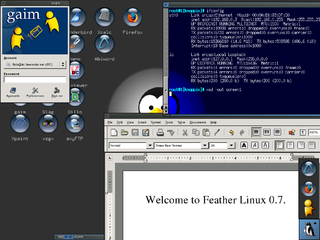 W
WFeather Linux, created by Robert Sullivan, was a Knoppix-based operating system which fits in under 128 MB. It boots from either a CD or a USB flash drive, into a Fluxbox desktop environment. It has a wide range of desktop and rescue software, and can load entirely into RAM or be installed to a hard drive. Feather Linux contains GTK+ applications, such as AbiWord and Pidgin. Feather Linux has tried to include software that people would frequently be using on their desktop.
 W
WKDE neon is a Linux distribution developed by KDE based on the most recent Ubuntu long-term support (LTS) release, bundled with a set of additional software repositories containing the latest 64-bit versions of the Plasma 5 desktop environment/framework, Qt 5 toolkit and other compatible KDE software. First announced in June 2016 by Kubuntu founder Jonathan Riddell following his departure from Canonical Ltd., it has been adopted by a steadily growing number of Linux users, regularly appearing in the Top 20 on DistroWatch.com's popularity tables.
 W
WKwort is a Linux distribution, based on CRUX. Kwort's desktop environment is Openbox.
 W
WLinpus Linux is a Fedora-based operating system created by the Taiwanese firm Linpus Technologies Inc. Linpus was designed specifically to fully support the Asian market, with full Unicode support for the Chinese and Japanese languages. A special version, Linpus Lite, was written to run on devices with lower-cost hardware such as netbooks. It has both an icon and tab-based "Simple mode", designed for new users; and, a conventional style "PC mode" for those wanting a more Microsoft Windows-like interface. It is targeted at handheld devices with smaller screens, and supports resolutions as low as VGA (640×480).
 W
WLinux XP was a Fedora-based shareware Linux distribution designed to imitate Windows environment using GNOME desktop; it could run some Microsoft Windows programs using the Wine compatibility layer. Linux XP had to be registered within 99 bootings after installation, or the OS would deactivate.
 W
WLliureX is a project of the Generalitat Valenciana whose objective is the introduction of the new technologies of information and communication based on free software in the education system in the Valencian Community.
 W
WLXLE is a Linux distribution based upon the most recent Ubuntu/Lubuntu LTS release, using the LXDE desktop environment. LXLE is a lightweight distro, with a focus on visual aesthetics, that works well on both old and new hardware.
 W
WMIRACLE LINUX is a Red Hat Enterprise Linux-based commercial Linux distribution in Japan, developed and supported by Cybertrust Japan Co., Ltd.
 W
WPelicanHPC is an operating system based on Debian Live, which provides a rapid means of setting up a high performance computer cluster.
 W
WSoftlanding Linux System (SLS) was one of the first Linux distributions. It was founded by Peter MacDonald in May 1992. Their slogan at the time was "Gentle Touchdowns for DOS Bailouts".
 W
WTopologiLinux is a free Linux distribution to be run on an existing Microsoft Windows system. The main feature of TopologiLinux is that it does not require any partitioning. It is based on Slackware and Cooperative Linux (coLinux). TopologiLinux has been chosen as one of nine open-source projects used as principal examples in a study of the characteristics of open-source software.
 W
WTurbolinux was a Japanese Linux distribution targeting Asian users.
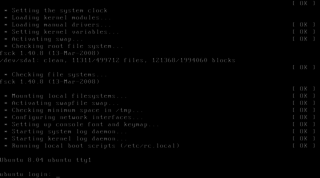 W
WUbuntu JeOS is a discontinued variant of Ubuntu that is described as "an efficient variant ... configured specifically for virtual appliances." It is a concept for what an operating system should look like in the context of a virtual appliance. JeOS stands for "Just enough Operating System." JeOS has been replaced by Ubuntu Core, which is now an officially supported minimal variant of Ubuntu.
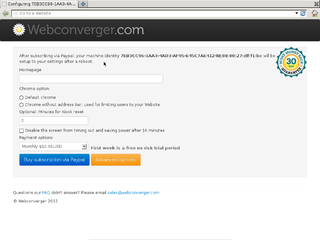 W
WWebconverger is a Linux-based operating system designed solely for accessing Web applications privately and securely. Based on the Debian distro, it is able to boot live from removable media like CD-ROM or USB flash drive but can also be installed to a local hard drive. Webconverger is pre-compiled to run on any x86 hardware. It does not have high system requirements and will also run on older machines.
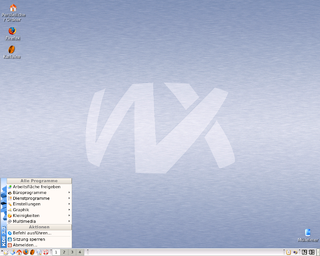 W
WWIENUX is a Debian-based Linux distribution developed by the City of Vienna in Austria. Its main purpose is to replace proprietary operating systems and applications on the municipality's thousands of desktop computers with free and open source alternatives based on KDE, OpenOffice.org and Firefox. WIENUX was released 2005 under the General Public License and was available for free download from the distribution's web site until 2008 when the download page was taken offline. In 2009 the migration to Linux as operating system was stopped and most desktop computers were equipped with a Windows operating system again.